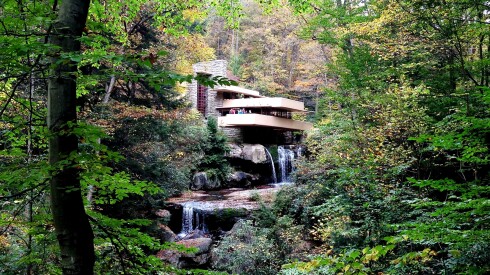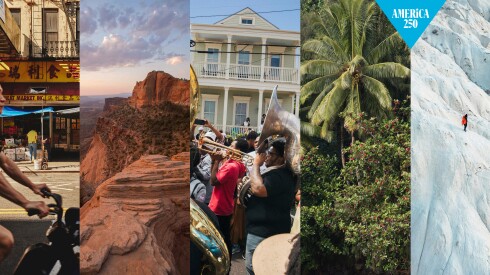Junín 1760, C1113 CABA, Argentina
La Recoleta Cemetery is one of the most visited cemeteries in Latin America, mainly because Evita Peron is buried there, among other notable figures. The cemetery is built around a convent and a church, Our Lady of Pilar (Iglesia de Nuestra Señora del Pilar), that was built in 1732. The order was disbanded in 1822, and the garden of the convent was converted into the first public cemetery in Buenos Aires. Occupied by mostly wealthy families of Buenos Aires. Highly recommended to have a guided map to find some famous graves.
Lafinur 2988, Buenos Aires, Argentina
No woman—or man—has come to symbolize Argentina more than Eva Perón, the country’s first lady from 1946 until her death at age 33, in 1952. Learn about this iconic figure at the Evita Museum, where photos, videos, and numerous personal effects (including dresses and even shoes) provide an intimate, in-depth chronological view of Evita’s life. The museum site was once the headquarters of the Eva Perón Foundation, which helped women who came to Buenos Aires from the provinces; the ornate structure, originally built in the early 1900s, is a marvelous backdrop to the small museum. Perhaps even more popular than the exhibits is the on-site restaurant, which serves delicious food on a gorgeous plant-filled patio.
Av. Pres. Figueroa Alcorta 3415, C1425 CLA, Buenos Aires, Argentina
Like any great city, Buenos Aires has its Museum Mile. For art, standouts include the National Fine Arts Museum (MNBA), with its mix of Argentine and European pieces, as well as the Buenos Aires Latin American Art Museum (MALBA), highlighting the works of Latin American artists. Walk the boulevard between the MNBA and MALBA to see some of the city’s most luxurious real estate. From the MNBA, cross Figueroa Alcorta and swing by the University of Buenos Aires Law School and Floralis Genérica, a 65-foot, stainless-steel kinetic sculpture representing a massive flower. Follow Figueroa Alcorta to Castilla, then turn left into Grand Bourg Park, a stately, if petite, plaza surrounded by imposing palaces, or take a right into Palermo Chico with its circular streets, grand mansions, and palaces.
Av. Santa Fe 1860, C1124 CABA, Argentina
Buenos Aires is a city of readers—it supports more bookstores per capita than any other place in the world. The crown jewel of the librerías here is the Ateneo Grand Splendid. Housed in a theater where music legends such as Carlos Gardel once attracted vast crowds, the store features shelf after shelf of tempting volumes on its rounded balconies. Italian frescoes on the domed ceiling and plush red-velvet curtains are from the theater’s original 1919 design. The four-story space carries over 120,000 books and a local-music selection, and there’s a café on the erstwhile stage.
Buenos Aires, C1425 Buenos Aires, Argentina
The red-gravel paths that wind among 6,000 plant species, past a babbling stream, and into deeply shaded areas may make you forget you’re in the center of a loud, bustling city. That said, many visitors don’t know that the Botanical Garden includes a small butterfly garden. It’s closed during the week, but you can still peek over a low wall to watch some 50 butterfly species flit about their business. And for one glorious hour, from noon to 1 p.m. on Saturdays, the gate is thrown open and the public is free to walk sunny paths among shoulder-high flowering hedges as colorful, flirtatious butterflies alight on amused visitors’ heads, shoulders, and arms.
Av. Hipólito Yrigoyen s/n, C1087 CABA, Argentina
On every Thursday for the past 40 years, women have walked a picket line around Buenos Aires’s most politically significant plaza. They call themselves Las Madres de la Plaza de Mayo, and each mother present has lost a son or a daughter, presumably “disappeared” at the hands of the nation’s 1970s-era military dictatorships. Some days only a half-dozen mothers lead the march; though increasingly elderly, they are still determined to carry on the fight against all forms of oppression. You’d expect it to be a depressing affair, but in fact it’s quite moving to see the crowd of 50 or more supporters march beside the original mothers as they chant, demanding accountability for one of Latin America’s most shameful and violent historical episodes.
Cerrito 628, C1010 CABA, Argentina
Teatro Colón is considered one of the most beautiful theaters in the world. Though the theater was, to the great disappointment of many travelers, closed for years while undergoing major renovations, the Colón has now reopened and is playing host to a busy schedule of opera, ballet, and symphony. If you can’t get tickets for this legendary theater, try another elegant venue like Teatro Nacional Cervantes or Teatro San Martin. Check out Ciudad Cultural Konex if you’d rather see an edgier contemporary performance of modern dance or theater, or head to La Trastienda to hear live music by some of Argentina’s best young artists.
Agüero 2502, C1425 CABA, Argentina
One of the more jarring building styles you’ll find in the city’s architectural mishmash is brutalism, and Argentina’s National Library is an iconic example of the movement. The imposing structure rises like a mammoth tree in the park that surrounds it, and its design seeks to suggest expansion: A root-like system of underground book depositories can be enlarged without changing the building’s intended aspect. When readers request titles, these come up through the building’s central trunk to a fifth-floor reading room, open to the public and featuring an unobstructed view of the Recoleta neighborhood and the river. Check the library’s website for information on talks, concerts, and events.
11 de Septiembre 1901, C1428 CABA, Argentina
La Glorieta attends to those attracted to tango’s drama but who eschew slick, three-hour dance extravaganzas in downtown cabarets. Free and open to the public, this gazebo, in a plaza near Belgrano’s Barrio Chino, transforms on weekend evenings into an open-air gathering place for tango dancers—young and old, experienced and rookies alike. If you’re looking to learn the dance’s steps (as well as its complex etiquette), go early for classes (5–6:30 p.m.) before the dance floor opens. Dancing goes on until 11 p.m. and is canceled on rainy nights.
Defensa 755, C1065AAM CABA, Argentina
Touring this one-of-a-kind urban villa and archaeological site allows a unique insight into the city’s history. The beautifully restored urban mansion was once the residence of a wealthy Spanish family; they fled for higher ground when yellow fever struck San Telmo, and the abandoned building later served as tenement housing for countless immigrant families. When a new buyer purchased the property in 1985, he discovered layers of historical objects in the subterranean tunnels. Today, knowledgeable local guides take small groups through the grand villa and its underground maze, pointing out the old water cistern and display cases filled with antique children’s toys, old hairbrushes and beautifully painted dishes, reminders of an era gone by.



















